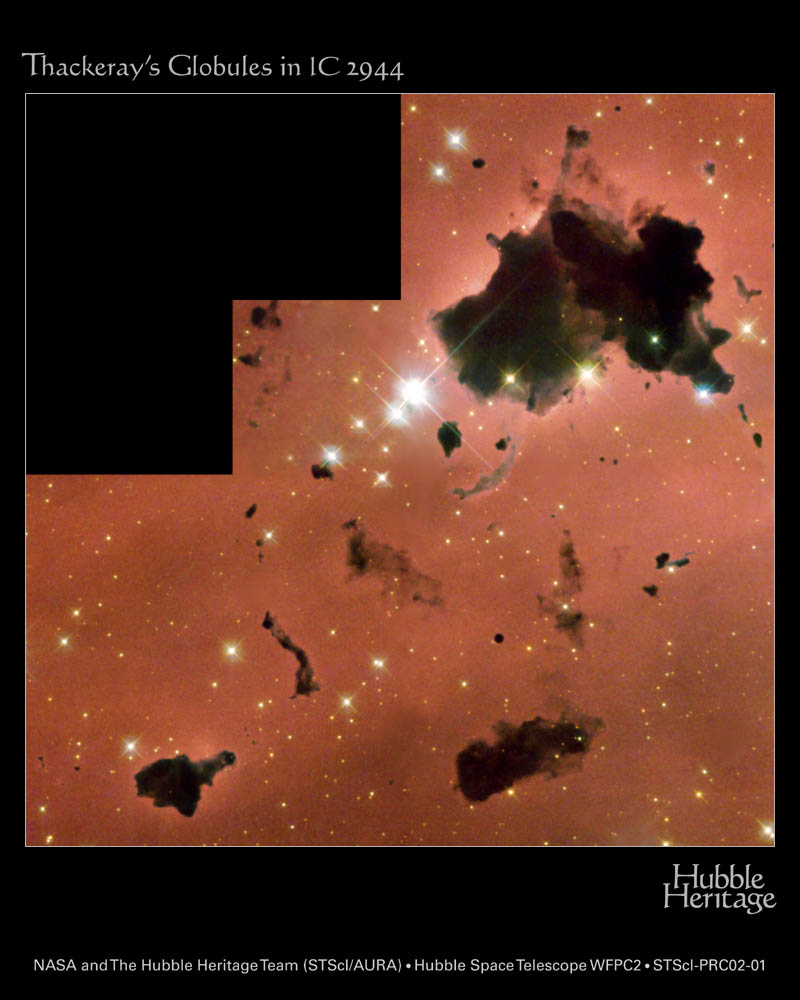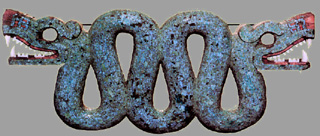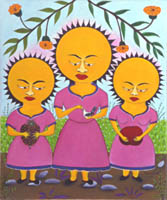Besides Stars, What are Galaxies Made of?
Discovery of the Interstellar Medium, Another Key Part of Galaxies
Key points: What makes up the interstellar
medium; nebulae of different kinds; HII and HI regions, molecular clouds
 |
Interstellar dust had fooled astronomers
about distances and colors of objects for
more than a century. Early observations with telescopes showed "Holes in
the Heavens". Astronomical photography at the turn of the century revealed many more dark regions.
- Eventually astronomers realized that these are dark
clouds in space blocking our view of the stars behind them.
- Dust distributed throughout the galaxy was discovered
when the colors of some stars did not match the colors expected from their temperatures as
deduced from their spectral types. For example, a star with spectral type B has a
temperature of about 15,000o, which should look blue-white. However, it may
appear to be quite red if it is behind a lot of dust, similar to a star with a temperature
of only 4,000o or less that is free of dust.
Dust distributed throughout the galaxy
preferentially transmits red light and absorbs or scatters blue light . (This is the same physical process that
makes the setting sun look red and the sky look blue). Thus, stars appear both redder and
dimmer if we view them through intervening clouds of dust. . (This is the same physical process that
makes the setting sun look red and the sky look blue). Thus, stars appear both redder and
dimmer if we view them through intervening clouds of dust. |
| Here is another view designed to enhance
appearance of the
gas in the Orion Nebula (from M. Robberto, Astronomy
Picture of the Day, NASA, ESA) |
 |
Most interstellar gas is hydrogen and
helium. Interstellar dust accounts for about 1% of the interstellar material and is a
combination of carbon (graphite) and silicates (similar to sand in
composition). In the table below, we compare the gas densities in different environments: the interstellar gas is very
dilute compared with air at the surface of the earth, or even the best vacuum we can
achieve in a laboratory.
| Locale |
Density
g/cm3 |
Distance between particles (cm) |
| Air in room |
1.2x10-3 |
1x10-7 |
| Nebula around forming star |
1x10-8 |
5x10-6 |
| Vacuum in lab |
1x10-12 |
1x10-4 |
| Orion Nebula |
1x10-21 |
0.1 |
| Typical Interstellar Space |
1x10-24 |
1 |
We describe interstellar clouds in
terms of their appearance and the state of the gas:
Reflection nebula: cloud contains dust particles that can scatter star light. These nebulae
look blue in color because blue light scatters better than red light.
Emission nebula:
cloud of gas and dust lying close to a hot star that
ionizes the hydrogen in the cloud. Also called "HII Regions" -- HII means
hydrogen atoms with their electrons gone (HI means regular hydrogen). These nebulae look
red in color because hydrogen has a strong emission line in the red part of the spectrum.
O or B stars are the only stellar types hot enough to create HII regions.
HI cloud: Cool gas, also called HI regions
because the hydrogen gas is neutral, not ionized.
Molecular cloud: cloud of gas and dust that is dense and cool. Although mostly made of
molecular hydrogen, they also contain molecules like carbon monoxide, water, methane,
alcohol and even more complicated ones. They may have temperatures as low as 10
degrees K and are
the regions where stars form.
 |
The horsehead nebula is a cold molecular cloud seen as a
shadow against a red background of a diffuse HII region. A compact HII region lies to the lower
left, with its color dominated by the scattered star light. This picture
therefore contains a reflection nebula, an emission nebula, and a molecular
cloud. (from
http://antwrp.gsfc.nasa.gov/apod/ap031007.html
CFHT, J.-C. Cuillandre, Coelum |
Test your understanding before going on

![]() . (This is the same physical process that
makes the setting sun look red and the sky look blue). Thus, stars appear both redder and
dimmer if we view them through intervening clouds of dust.
. (This is the same physical process that
makes the setting sun look red and the sky look blue). Thus, stars appear both redder and
dimmer if we view them through intervening clouds of dust.




